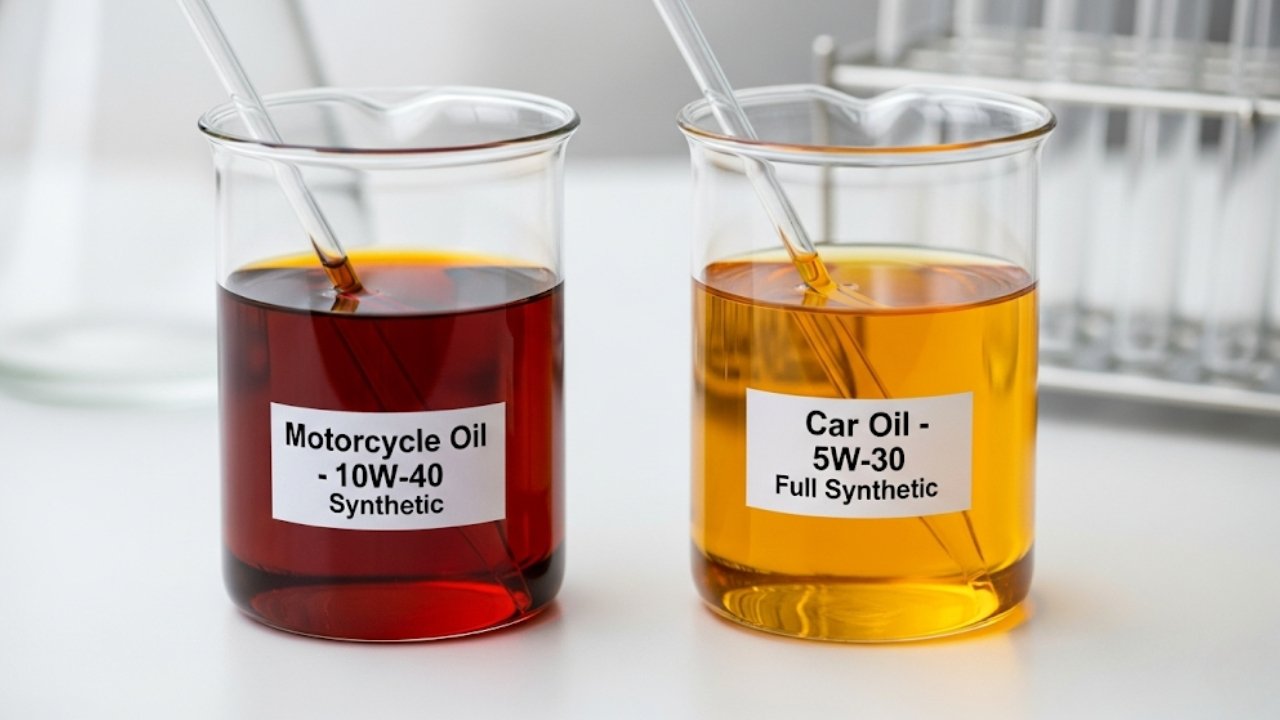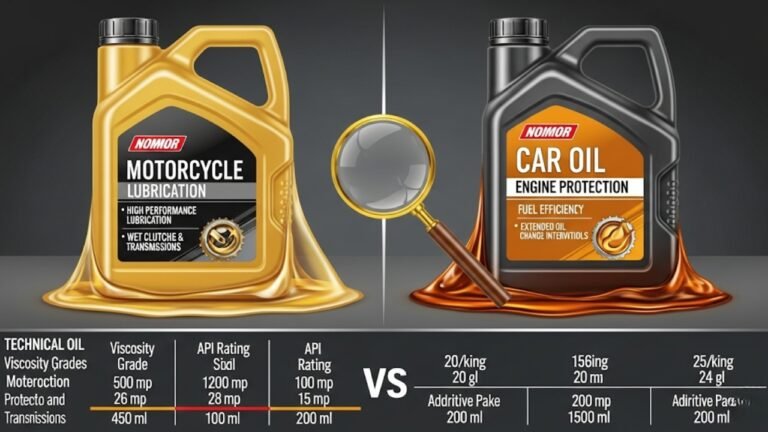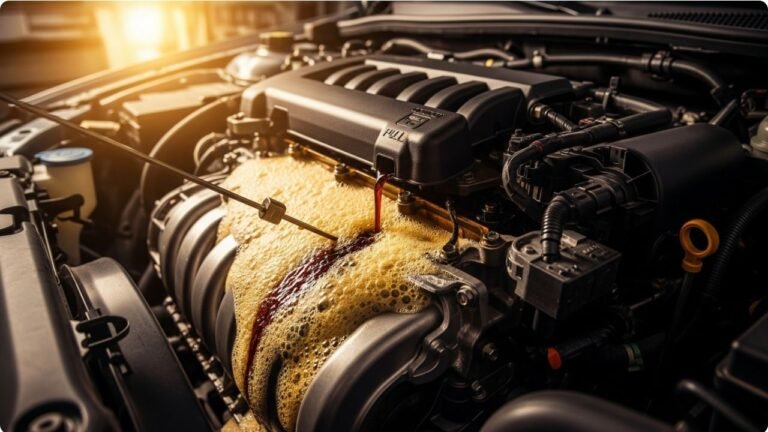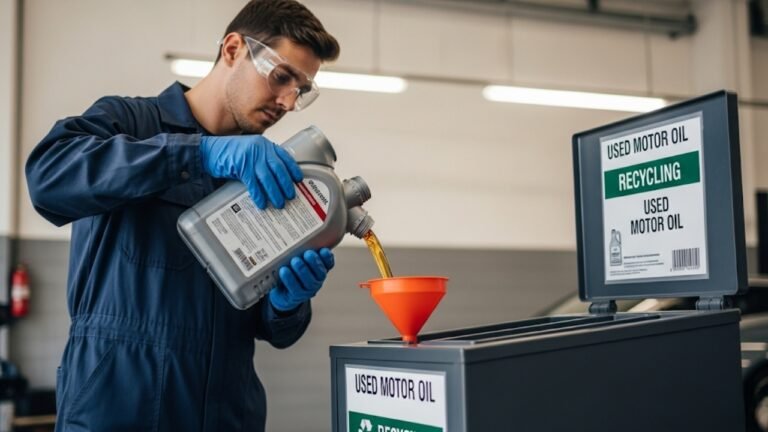What Is the Difference Between Motorcycle Oil and Car Oil?

Ever wondered why your mechanic insists on motorcycle oil for your bike and car oil for your sedan? Maybe you’ve been tempted to swap them—after all, oil is oil, right? Well, not exactly. I used to think the same until I almost ruined my Honda CBR by pouring in car oil during a desperate moment. It taught me something vital—motorcycle oil and car oil aren’t twins, they’re distant cousins.
This article dives deep into what is the difference between motorcycle oil and car oil, using real talk, easy terms, and a little humor. Whether you ride a street bike through city traffic or drive a family car across town, this guide helps you understand why using the right oil matters more than you think.
Let’s clear the confusion, one drop at a time.
The Engine Story: Why One Size Doesn’t Fit All

Motorcycles typically have high-revving engines. They operate at 9,000 to 14,000 RPM, while most cars sit comfortably around 2,000 to 6,000 RPM. This higher RPM means motorcycle oil must handle more heat, faster shearing, and intense friction in a much smaller space.
In contrast, car engines have larger oil reservoirs and are built for longer, slower endurance. Car oil focuses more on cleaning, cooling, and maintaining viscosity over longer distances, especially with start-stop traffic and urban driving.
So, while both oils aim to protect engines, the conditions they face are like comparing a hot street race with a calm countryside cruise. That’s why oil formulation—additives, detergents, and viscosity ratings—is uniquely tailored.
In short? What works in a car might clog or damage a motorcycle.
Additives Aren’t Just Extras—They’re the Real MVPs
The secret sauce in engine oil lies in its additive package. This is where things start to get interesting.
Car oil usually contains friction modifiers to boost fuel economy. These modifiers reduce drag inside the engine, which sounds great—until you realize that motorcycles use wet clutches, meaning the engine oil also lubricates the transmission and clutch plates. Those same friction modifiers can make your clutch slip or fail entirely.
That’s why motorcycle oil avoids those additives or uses clutch-safe versions. It needs to strike a balance—smooth enough for engine parts, grippy enough for the clutch, and tough enough for the gears.
Here’s a quick comparison:
| Feature | Motorcycle Oil | Car Oil |
|---|---|---|
| Friction Modifiers | Minimal or none | Often included |
| Detergent Levels | Medium | High |
| Gear Protection | Yes (shared with engine) | No |
| Wet Clutch Compatibility | Yes | No |
| High Shear Stability | Essential | Moderate |
That’s the difference between just running your engine and truly protecting it.
️ The Wet Clutch Dilemma: Motorcycle-Specific Challenges
Let’s talk about the wet clutch, because this is where many well-meaning riders go wrong. In most motorcycles, the engine oil lubricates not just the engine but also the clutch and gearbox. Think of it like using one shampoo for your hair, scalp, and beard—you need a balanced formula.
Car oil, built for isolated engines and automatic transmissions, doesn’t need to worry about clutch behavior. But throw it into a motorcycle, and your clutch might start slipping like a wet bar of soap. I had a friend who thought he scored a deal using leftover car oil in his Yamaha. Two weeks later, his clutch was toast. Lesson learned.
Motorcycle oil must maintain grip while reducing wear and keeping gear shifts smooth. It’s like being a ninja—strong, precise, and quiet. That’s why oils like JASO MA or JASO MA2 certified motorcycle oils are essential. These standards mean the oil passed tests for clutch performance, gear protection, and thermal stability.
So yes—your bike is picky for a reason. It’s not being dramatic.
Heat, Shear, and RPMs: The Triple Threat
Heat is the silent killer of engines, and motorcycles generate a lot of it. With smaller oil pans and higher revs, your bike’s oil gets cooked faster, especially during long rides or city traffic.
Here’s where high shear stability comes into play. Motorcycle oils must resist viscosity breakdown caused by mechanical shearing—basically, when oil molecules are torn apart by tight, fast-moving engine parts.
Car oil, although well-suited for cooler and slower-running engines, tends to thin out under high shear stress. This can lead to loss of protection in critical motorcycle components like camshafts, gears, and piston rings.
Ever smelled burnt oil after a summer ride? That’s low shear stability at work. Motorcycle oil is engineered to stay thick where it counts, even after hours of redlining.
Using the wrong oil here is like wearing flip-flops to climb a mountain—you’ll get hurt fast.
Detergents and Cleaning Power: How Clean Is Too Clean?
Here’s a surprising twist—more cleaning isn’t always better. While you’d think car oil’s high detergent levels are a good thing, they can actually strip away protective films in a motorcycle’s engine.
Motorcycle engines are more compact and sensitive. The combustion chambers, gaskets, and valve guides often depend on a thin layer of oil film to seal properly. Too many detergents can thin this layer, leading to premature wear or oil leaks.
Motorcycle oil uses a balanced detergent system. It cleans enough to prevent sludge, but not so much that it damages parts. Think of it like washing your face—you want clean skin, not irritated or dry pores.
So, when it comes to detergents, motorcycle oil wins by doing just enough, not too much.
Viscosity Ratings: Understanding the Code on the Bottle
Let’s decode something simple but powerful: those numbers on the bottle like 10W-40 or 5W-30.
The “W” stands for winter, showing how oil flows in cold starts. The second number shows how thick the oil stays when hot. But that’s just the surface.
Motorcycle oils usually have a higher hot-end viscosity (like 10W-40 or 20W-50). This gives better protection at higher temps and RPMs. Car oils, especially modern ones, lean toward lower viscosity like 5W-20 to improve fuel economy.
If you use a thin car oil in your bike, you risk metal-on-metal contact at high revs. It won’t hold up under pressure.
Motorcycle oil must stay thick under pressure, at heat, during acceleration, and across clutch engagement—all at once. That’s a tall order, and car oil simply can’t keep up.
Key Differences Between Motorcycle Oil and Car Oil – At a Glance
Let’s simplify everything into bullet points for easy recall:
-
Motorcycle oil handles higher RPMs and shared lubrication systems (engine, clutch, gearbox).
-
Car oil is optimized for fuel economy, longer intervals, and cleaning performance.
-
Motorcycle oil avoids friction modifiers to protect the wet clutch.
-
Car oil may damage a bike’s clutch or reduce engine protection under stress.
-
Viscosity ratings differ in function, not just numbers.
-
Detergents in car oil may be too strong for motorcycle engines.
-
Motorcycle oil is tested under JASO MA/MA2, while car oils follow API SN/SP and similar.
Real-Life Impact: What Happens When You Use the Wrong Oil?
Here’s where theory meets the road—literally. Picture this: a rider in Dhaka rushes to the store for an oil change but mistakenly picks up car oil instead of motorcycle oil. “It’s just temporary,” he tells himself. A week later, his bike’s clutch begins to slip. Acceleration feels sluggish. Gear shifts become clunky.
This isn’t just coincidence. It’s incompatibility. Using the wrong oil is like feeding spicy street food to a baby. It might go in, but it’ll cause trouble soon after.
Motorcycle engines, because of their compact size, high output, and integrated systems, are very sensitive to oil characteristics. And once your wet clutch starts slipping, it’s not something you can fix with a quick tune-up—it might mean replacing the whole clutch assembly.
That’s why understanding what is the difference between motorcycle oil and car oil isn’t just for mechanics or enthusiasts. It’s a lesson in engine survival for everyday riders.
Synthetic vs Mineral: Does the Oil Type Matter?
Now that we’ve discussed how motorcycle and car oils differ, let’s dive into the type of oil—synthetic vs mineral. This debate exists across both vehicle types, but again, context is key.
-
Mineral oil is the traditional kind, refined from crude oil. It’s cheaper but breaks down faster, especially under heat.
-
Synthetic oil is chemically engineered for higher performance, longer life, and better protection under stress.
For motorcycles, synthetic oils like 10W-40 full synthetic JASO MA2 are often preferred because of their resistance to thermal breakdown and better clutch performance. In contrast, car oils can get away with synthetic blends or even mineral oils, especially in older engines.
But here’s the trick—synthetic car oil still won’t protect your bike’s clutch. Even if it’s the best car oil out there, it’s not built for shared lubrication systems.
Choose the oil not just by type—but by function and certification.
Certifications That Matter: JASO vs API
Oil isn’t oil unless it’s tested and certified. You’ll often see API and JASO symbols on oil bottles. Let’s break them down.
-
API (American Petroleum Institute) standards are common for car oil. Look for SN, SP, or newer grades.
-
JASO (Japanese Automotive Standards Organization) is for motorcycle oil. Look for JASO MA, MA2, or MB.
JASO MA/MA2 oils are safe for wet clutches and high-shear engines, offering maximum protection. JASO MB oils are usually used in scooters and aren’t meant for motorcycles with wet clutches.
If your motorcycle oil doesn’t say JASO MA or MA2, it’s probably not safe for the clutch or transmission. That one detail could save you a costly repair later.
️ Cultural Insight: DIY Oil Changes and Garage Tips
In many countries, especially across South Asia, the DIY oil change culture is huge. It’s common to see bike owners in Bangladesh, India, or Pakistan changing oil at home with tools passed down from fathers and uncles.
But here’s what often gets missed: product knowledge. A trip to a local parts shop might not guarantee the right oil. Sellers might offer you automotive oil at a discount, hoping you won’t notice the difference. And many riders fall for it, thinking all engine oil is interchangeable.
The result? Burnt clutch plates, overheating engines, and poor mileage.
The fix? Education and habit. Always read the label. Ask for motorcycle-specific oil with JASO MA2 certification. And avoid shops that mix car and bike oils without proper guidance.
When in doubt—spend a little more for the right oil, and save thousands later.
FAQs About Motorcycle Oil vs Car Oil
1. Can I use car oil in my motorcycle in an emergency?
If it’s truly an emergency and just a few kilometers from home, yes—but only once and very temporarily. Flush and replace with the correct motorcycle oil as soon as possible.
2. Why does my bike clutch slip after using car oil?
Car oil has friction modifiers that reduce grip. This causes wet clutches to slip, leading to poor performance and wear.
3. How often should I change motorcycle oil vs car oil?
Motorcycles usually need oil changes every 2,000–4,000 km, while cars can go 5,000–10,000 km, depending on usage and oil type.
4. Is synthetic oil always better for motorcycles?
In most modern bikes—yes. Synthetic oil offers better protection, especially under high RPMs and heat. But always check for JASO MA2 certification.
5. What if I accidentally used car oil in my motorcycle?
Don’t panic. Drain the oil, flush the engine, and refill with the correct oil. If the bike shows signs of clutch slipping, have it checked by a mechanic.
6. Are scooter oils the same as motorcycle oils?
No. Most scooters use JASO MB oils designed for dry clutch CVT systems, while motorcycles need JASO MA/MA2 for wet clutch systems.
7. Why is motorcycle oil more expensive than car oil?
Because it does more work. It lubricates the engine, clutch, and gearbox—all at once—requiring stronger additives and higher shear stability.
8. Is it okay to switch brands frequently?
Yes, as long as the new oil meets the same specs—viscosity, synthetic/mineral type, and JASO rating. Just don’t mix oils from different brands at the same time.
Final Thoughts: Choose Wisely, Ride Smoothly
By now, the question of what is the difference between motorcycle oil and car oil should feel like second nature to you.
It’s not just about what oil “fits” or what bottle looks good. It’s about understanding how your engine works, what it needs to thrive, and why shortcuts don’t work in the long run. Your bike isn’t just a machine—it’s a partner in your daily journey, from dodging traffic jams to hitting open highways.
So next time you’re at the shop, don’t just grab any oil. Check the label. Ask questions. Look for that JASO MA2 badge and match the viscosity to your bike’s manual.
Because in the world of engines, oil isn’t just a fluid—it’s the blood that keeps everything alive.






